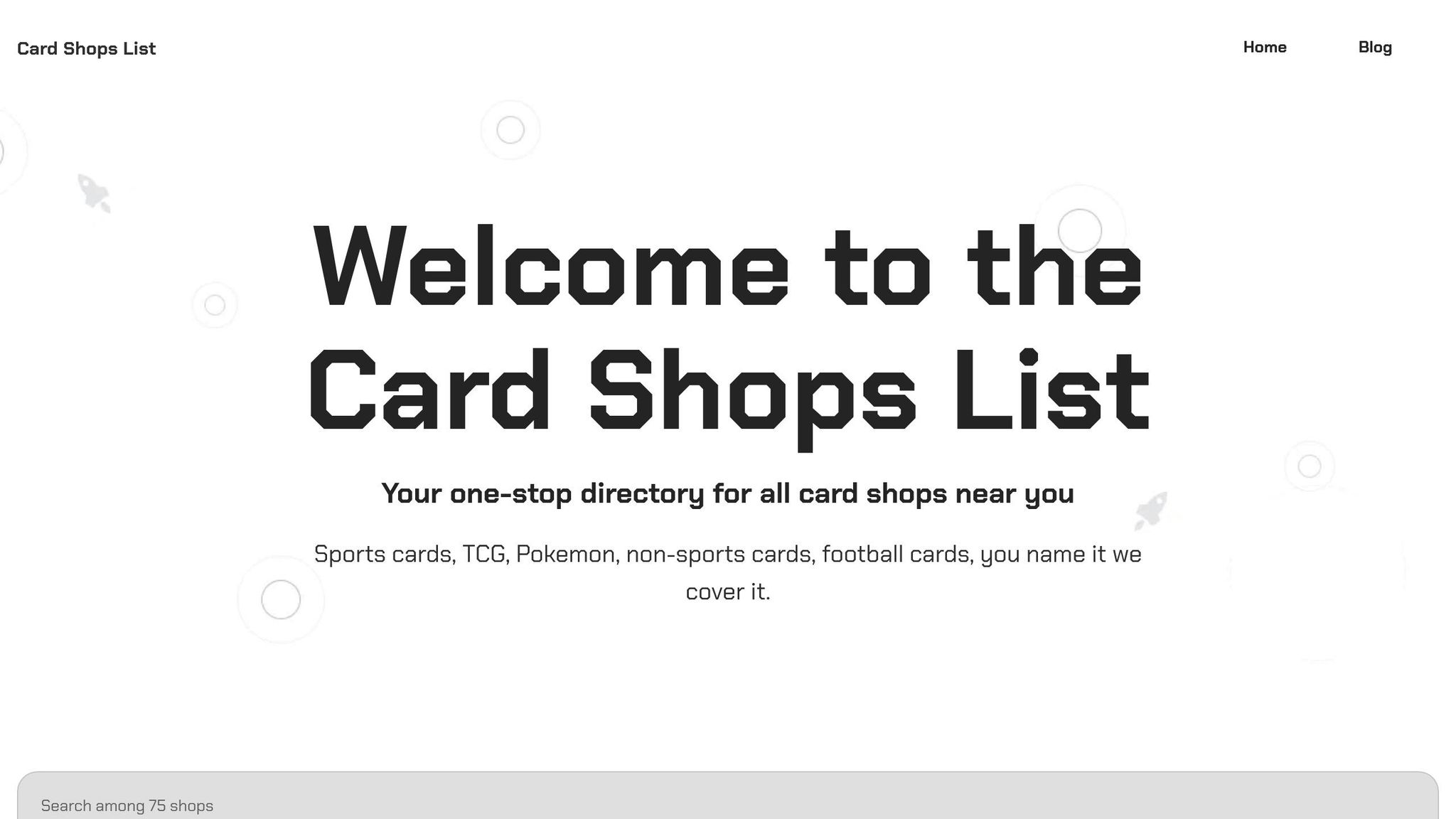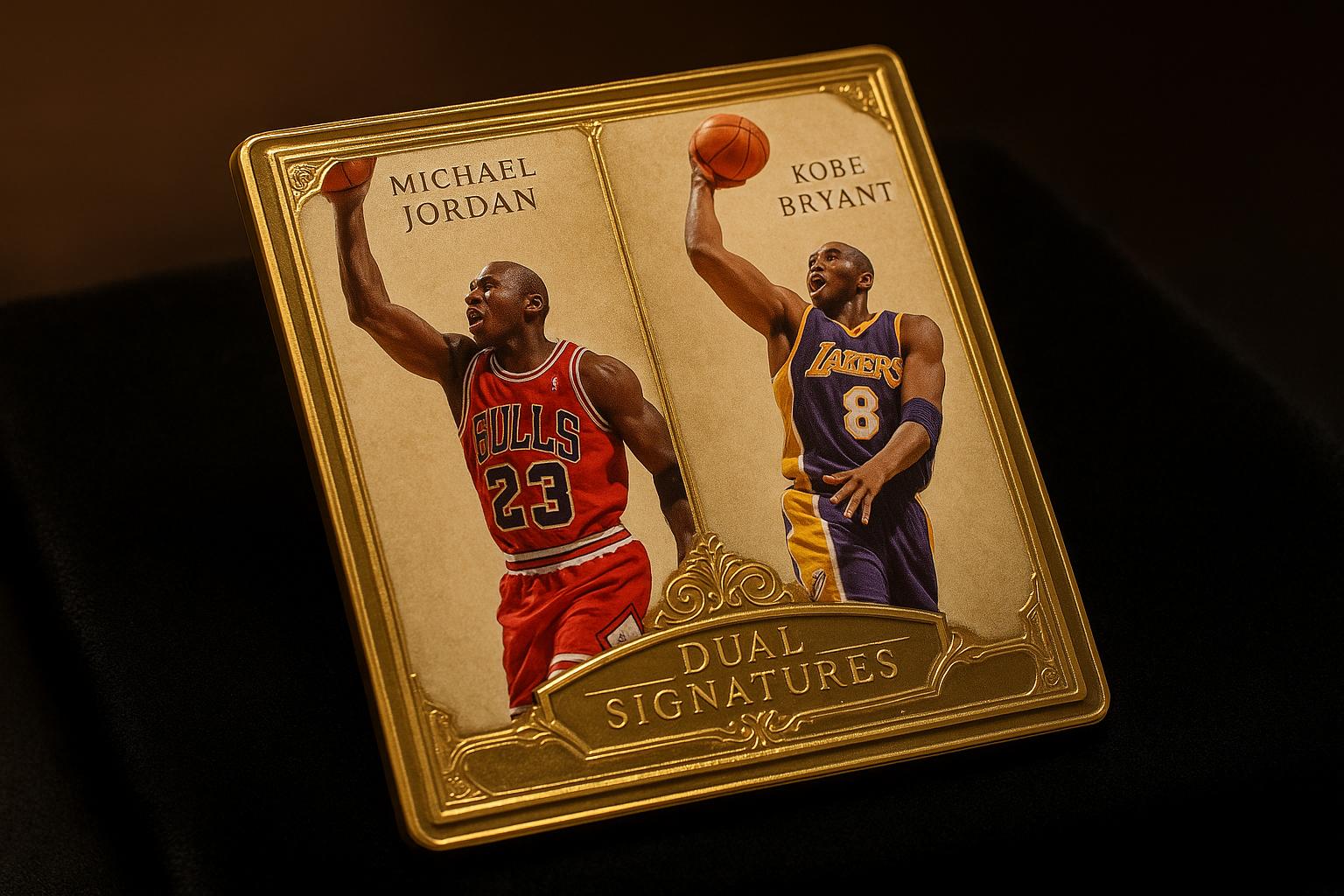Consignment fees are a key factor when selling trading cards through shops. These fees cover the shop's efforts to display, sell, and handle your cards. Shops typically use one of three fee structures:
- Flat Fees: A fixed amount per card, ideal for lower-value cards (e.g., $3–$10 per card).
- Percentage Commissions: A percentage of the sale price, suited for mid- to high-value cards (e.g., 15%–35%).
- Tiered Rates: Sliding percentages that decrease as card value increases, benefiting higher-value cards (e.g., 35% for cards under $100, 15% for cards over $1,000).
Key factors influencing fees include card value, shop policies, and additional services like grading or marketing. Sellers should prepare cards properly to avoid extra handling fees and research shops to find the best fit for their collection. Understanding these structures helps maximize your payout while reducing costs.
$19,000 Consignment Goldmine: How Does Consignment Work for Games, Pokemon and Magic Cards?
Types of Consignment Fee Structures
Card shops use different fee structures to accommodate varying card values and the number of items you want to consign. Each model comes with its own advantages, depending on your situation.
Flat Fees vs. Percentage Commissions
With flat fees, you pay a set amount per card, no matter the sale price. For example, a shop might charge $5.00 per card, whether it sells for $20.00 or $200.00. This straightforward approach works well for lower-value cards. Many shops apply flat fees to cards worth less than $50.00, as it simplifies the process for both the seller and the shop.
On the other hand, percentage commissions take a cut of the final sale price, typically ranging from 15% to 35%. For instance, if your card sells for $100.00 and the shop charges a 25% fee, you’d keep $75.00, while the shop earns $25.00. This model is better suited for mid- to high-value cards, as the commission scales with the card’s price, aligning the shop’s earnings with the effort required to sell pricier items.
Choosing between these models often comes down to your card’s value. Flat fees are ideal for consigning multiple low-value cards, while percentage commissions make more sense for single, high-value, or graded cards. For more flexibility, many shops also offer tiered fee structures that adjust based on sale price.
Tiered Fee Rates
Some card shops use tiered fee structures, where the percentage commission decreases as the sale price increases. For example, the rates might look like this:
- 35% for cards under $100.00
- 25% for cards between $100.00 and $500.00
- 20% for cards between $500.00 and $1,000.00
- 15% for cards over $1,000.00
This system benefits consigners by keeping fees reasonable for higher-value cards, while still rewarding shops for selling expensive inventory.
Additionally, many shops offer volume discounts as part of their tiered models. For example, consigning 20 or more cards might reduce your commission rate by 5%. This setup benefits both sides: you save on fees, and the shop gains a larger inventory to sell. Shops may also adjust rates for particularly valuable consignments or for repeat clients as a way to build long-term relationships.
Fee Models Comparison Table
Here’s a quick breakdown of the main fee structures:
| Fee Structure | Best For | Typical Range | Example Calculation |
|---|---|---|---|
| Flat Fee | Cards under $50 | $3–$10 per card | $25 card sale − $5 fee = $20 payout |
| Standard Percentage | Cards $50–$500 | 20%–35% | $200 card sale × 25% = $50 fee, resulting in $150 payout |
| Tiered Percentage | Mixed value collections | 15%–35% sliding | $800 card sale × 20% = $160 fee, resulting in $640 payout |
| Volume Discount | Large submissions | 5% off standard rates | $200 card sale with a 15% fee (reduced from 20%) = $170 payout |
The table highlights how these models can affect your earnings. Flat fees may feel steep for lower-value cards, while tiered percentages become more appealing as card values rise. Volume discounts are particularly useful for collectors selling larger collections or multiple high-value cards, offering a way to maximize payouts while minimizing costs.
What Affects Consignment Fees
Understanding what drives consignment fees - especially card value - can help you make smarter decisions.
Card Value Brackets
Most card shops use a sliding scale to determine fees based on the card's value. For example, cards valued between $50 and $300 typically come with fees around 15%. For cards in the $200 to $999 range, fees often drop to about 7%. If your card is worth more than $1,000, the percentage tends to decrease even further. This tiered system is designed to balance costs while factoring in service quality and market conditions.
Additionally, many services set a minimum card value - usually between $20 and $25 - to ensure the listing process is worth the effort. Up next, we’ll walk you through the steps for calculating these fees.
sbb-itb-0db97a5
How to Calculate Your Consignment Fees
To figure out your consignment payout, estimate your card's sale price, determine the applicable fee bracket, and factor in any flat fees.
Step-by-Step Fee Calculation
- Estimate the Sale Price: Start by gauging the market value of your card. Card shops often base their valuations on recent sales trends and current demand.
- Find the Fee Bracket: Check your shop's fee schedule to identify the commission rate for your card's value range.
- Calculate Your Payout: Multiply the sale price by the commission rate to determine the shop's cut. Subtract this amount from the sale price, then deduct any flat fees (e.g., a $2 processing charge) to arrive at your final payout.
Example Calculation
Here’s an example to illustrate how the fees work:
Imagine you’re consigning a graded Pokémon card valued at $400. If the shop uses a tiered fee structure with a 7% commission rate for mid-range cards, the calculation would look like this:
- Sale Price: $400
- Commission (7%): $28
- Gross Payout: $400 - $28 = $372
- Flat Fee: After subtracting a $2 processing fee, your final payout is $370.
This example highlights how higher-value cards can yield better returns since percentage-based fees often decrease with value, while flat fees remain constant.
“Do not delineate exactly what amount this fee is, so you have the flexibility of raising or lowering it in the future. But if a consignor asks, tell. It’s easiest to say something general like ‘It ranges from fifty cents to five dollars depending on the price, but mostly it’s fifty cents or a dollar.’” - Kate Homes, Author of Too Good To Be Threw
Alternative Fee Structures
Some shops use buyer’s fees instead of deducting fees from your payout. For instance, if there’s a $1 buyer’s fee on a $400 card, the customer pays $401, but your payout remains at $372, calculated from the original sale price. This setup ensures your earnings stay consistent while the shop increases its revenue.
Understanding these calculations helps you see how fee structures impact your bottom line.
Tips for Getting the Most from Consignment
Once you understand how fee structures work, you can take steps to make the most of your consignment experience. A little strategic planning can go a long way in boosting your payout.
Choose the Right Consignment Service
Not all consignment shops are the same, so it’s worth doing some homework. Start by looking into their fee structures to find one that aligns with your card’s value and your desired timeline. Some shops cater to high-end items, while others are better suited for bulk submissions. Understanding their focus and expertise is key.
For instance, if you're selling modern Pokémon cards, a shop that specializes in vintage baseball cards might not have the market knowledge to get you top dollar. Ask about their typical sale timeframes as well - this can help you decide if their process matches your goals.
Another factor to consider is their marketing reach. Shops with a strong online presence and a loyal customer base are often better positioned to fetch higher sale prices than those relying only on foot traffic. Don’t be shy about asking for references or examples of recent sales in your card’s category. Once you’ve chosen a shop, make sure your cards are ready to meet their standards.
Prepare Cards to Avoid Extra Fees
Getting your cards in top shape can save you money on fees and help them sell faster. Use a soft microfiber cloth or cotton swabs to gently clean off fingerprints and dust.
Organize your cards by type or value to make the intake process smoother. Some shops may charge extra handling fees if they need to sort your submission, so including a detailed inventory list with estimated values can save you time and money.
If you’re consigning high-value cards, it might be worth having them professionally graded before submitting them. While grading does require an upfront cost, graded cards often sell for more and can simplify the shop’s fee structure.
Use Card Shops List to Find Reputable Shops

The Card Shops List is a helpful directory for finding consignment services tailored to your collection. You can filter shops by services like consignment, grading, or card breaks, making it easier to find the right fit.
Whether you’re dealing with modern or vintage cards, the directory includes shops that specialize in both, so you can find one that matches your needs. Use it to compare multiple shops in your area - review their fee structures, turnaround times, and expertise before making your choice. Taking the time to research your options can make a big difference in maximizing your profits and ensuring a smooth selling experience.
Key Points About Consignment Fees
When it comes to selling your cards through consignment, understanding the fee structure is essential to get the best return. Let’s break down the key aspects of consignment fees and how they impact your sales strategy.
Fee Structures and What Influences Them
Consignment shops typically charge fees in one of three ways: flat rates, percentage-based commissions, or tiered pricing. These fees vary depending on factors like the card’s value, how it’s submitted, market demand, and the shop's operating costs. For instance, a high-value vintage card worth $500 will likely have a different fee structure compared to a $20 rookie card.
Cards that are in high demand - like Pokémon cards or those featuring popular sports stars - often have lower fees since they sell quickly. On the other hand, niche cards or those with limited appeal may face higher fees to offset the longer storage and marketing efforts required. Market trends and the shop’s overhead expenses also play a role in shaping the fees, making it critical to choose a consignment partner that fits your selling strategy.
Tips for Card Sellers
Here are a few practical tips to help you navigate the consignment process effectively:
- Shop Around for the Right Partner: Not all consignment shops are the same. Some excel in vintage baseball cards, while others are better suited for modern trading card games. Research multiple options to find the best fit for your collection.
- Prepare Your Cards: Proper preparation can save you from extra handling fees. Clean your cards, organize them neatly, and provide a detailed inventory list to streamline the submission process.
- Leverage Tools Like Card Shops List: Use directories to compare consignment services in your area. These tools let you filter shops based on their specialties and services, helping you find the right match for your cards and timeline.
FAQs
What’s the best way to choose a consignment fee structure for my trading card collection?
Choosing the right consignment fee structure for your trading card collection boils down to a few important considerations. Most card shops set their fees as a percentage of the final sale price, usually falling between 10% and 60%, depending on the shop and the value of your cards.
Here’s what to think about when deciding:
- Card type and value: If you’re consigning high-value cards, you might qualify for lower fee percentages, which can make a big difference in your final payout.
- Services offered by the shop: Some shops provide extras like grading or enhanced marketing. While these may come with higher fees, they could also increase the likelihood of a higher sale price.
- Your profit expectations: It’s all about balance. Consider how the fee percentage impacts your overall earnings and whether it aligns with your financial goals.
By weighing these factors, you can choose a consignment fee structure that works best for your collection and helps you get the most out of your trading cards.
How can I prepare my cards for consignment to avoid extra handling fees?
When consigning your cards, taking a few simple preparation steps can help you avoid extra handling fees. Start by placing each card in a protective sleeve to shield it from scratches or damage. For cards with higher value, consider using top loaders or card savers for added protection. Make sure the cards are clean, flat, and free from any dirt or debris before sending them.
If the shop has specific labeling requirements, follow their instructions carefully to ensure everything is properly marked. Thoughtful packaging not only keeps your cards safe during transit but also minimizes the need for extra handling, which can save you from unnecessary fees.
What are volume discounts in tiered consignment fees, and how can they help sellers save money?
Volume discounts in tiered consignment fee structures work by reducing the percentage you pay as your sales climb to higher levels. For example, you might pay a 10% fee on sales up to $1,000, drop to 7% for sales between $1,000 and $5,000, and then just 5% for anything exceeding $5,000.
This setup rewards higher sales by cutting down your overall fees, letting you keep more of your earnings. It's a smart way to increase your profit margins and provides a strong incentive for sellers aiming to get the most out of their partnership with card shops.


